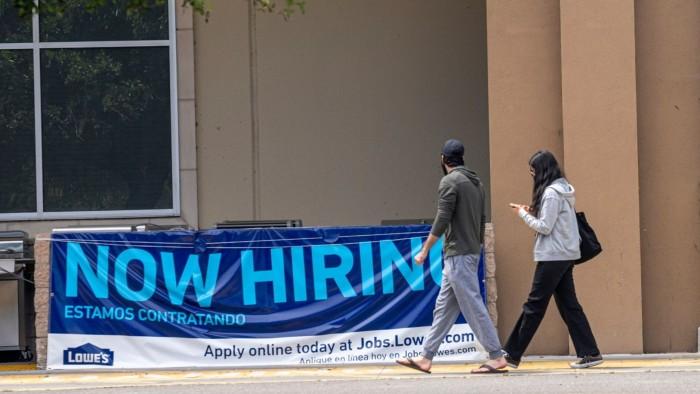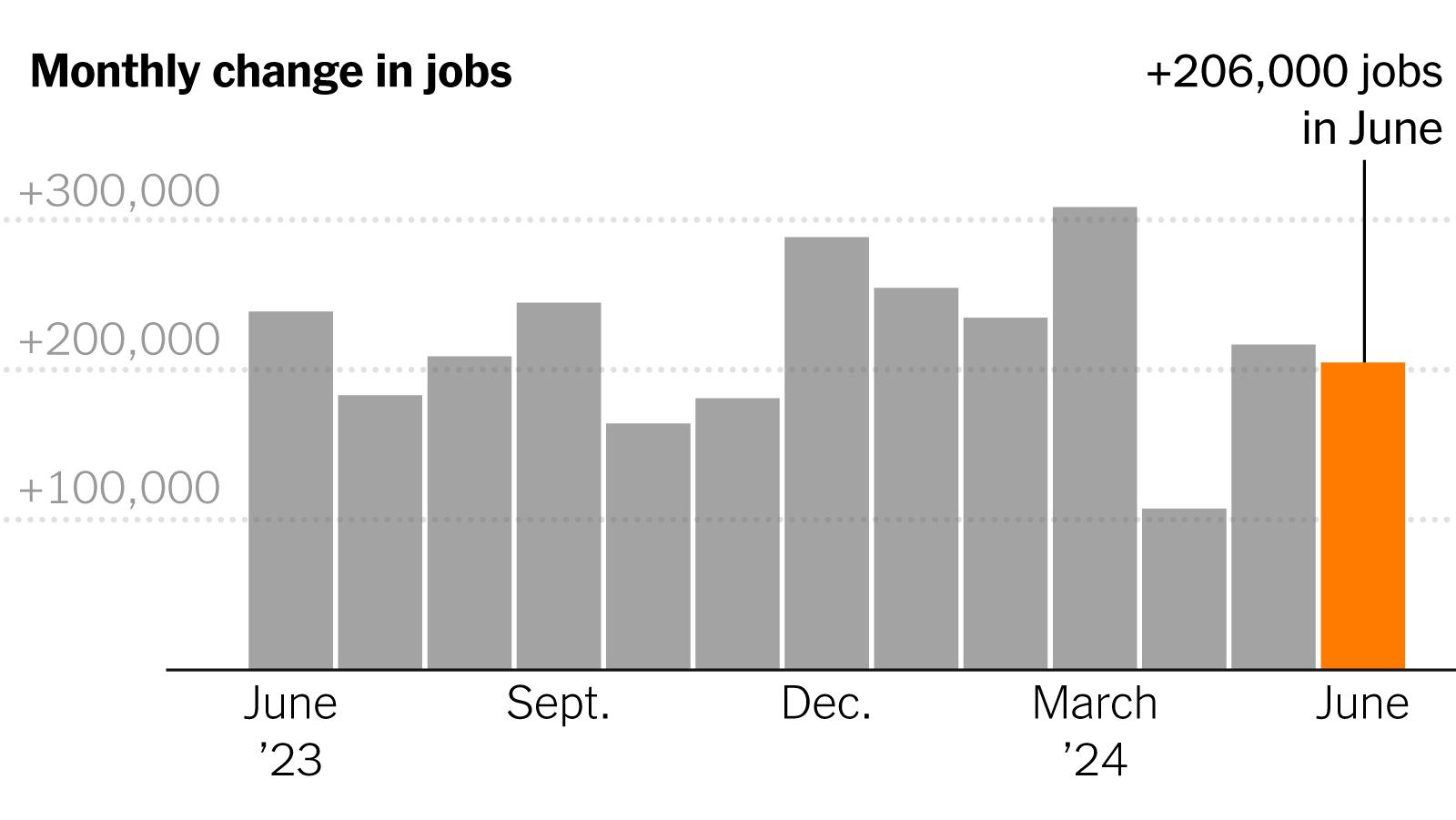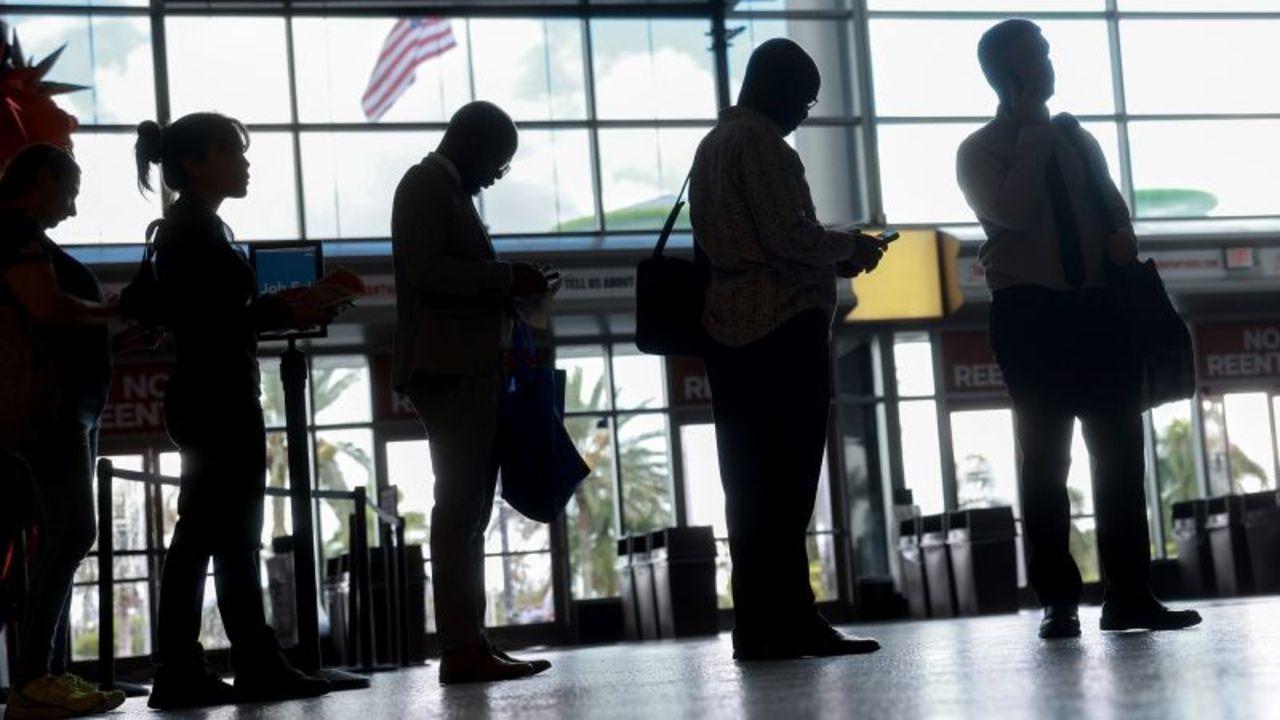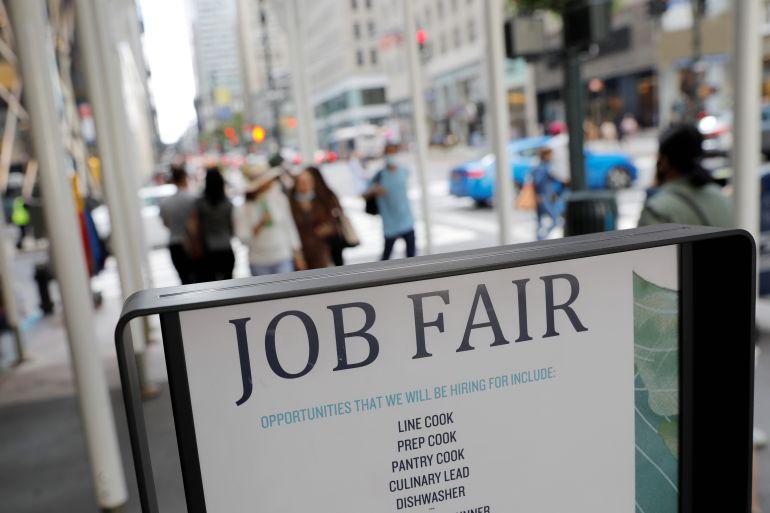The U.S. economy added 206,000 jobs in June. This figure slightly exceeded expectations, maintaining the strong employment trend.
The U.S. has now experienced 30 consecutive months of job growth. Since the pandemic-induced recession ended in April 2020, the economy has added over 23 million jobs.
Unemployment Rate Inches Up

June’s unemployment rate rose to 4.1%. This marks the first time since 2021 that unemployment has exceeded 4%.
The increase suggests some slack in the labor market. Historically, a 4.1% unemployment rate is still considered low, as the long-term average since 1948 is about 5.7%.
Wage Growth Shows Moderation

Average hourly earnings increased by 3.9% year-over-year. This represents the smallest annual gain since 2021.
The moderation in wage growth may ease inflationary pressures. For context, wage growth peaked at 5.9% in March 2022 during the post-pandemic recovery.
Labor Force Participation Rises

The labor force participation rate increased to 62.6%. This uptick indicates more people are entering the job market.
The rate remains below the pre-pandemic level of 63.4% in February 2020. Historically, labor force participation peaked at 67.3% in early 2000.
Stock Market Remains Stable

Stocks showed little change following the jobs report. This stability suggests investors view the economy as slowing gradually.
The S&P 500 has gained about 15% year-to-date in 2023. Since its pandemic low in March 2020, the index has more than doubled.
Fed’s Rate Decision Dilemma

The Federal Reserve faces a complex decision on interest rates. The cooling labor market might support rate cuts.
However, inflation concerns persist. The Fed has raised rates 10 times since March 2022, bringing the federal funds rate to a range of 5-5.25%, the highest since 2007.
Biden’s Re-election Campaign Impact

Continued job growth benefits President Biden’s re-election campaign. The rising unemployment rate, however, weakens a key talking point.
The U.S. has added over 13 million jobs since Biden took office. Historically, incumbent presidents with strong job growth have had better re-election prospects.
Sector-Specific Job Growth Trends

Healthcare, government, and leisure/hospitality sectors lead job growth. These sectors account for 1.7 million of 2.7 million jobs added last year.
This growth represents catch-up from pandemic losses. Pre-pandemic, these sectors collectively employed about 52 million people.
Immigration’s Impact on Labor

Increased immigration affects labor market dynamics. Economists estimate higher job growth is needed to maintain stable unemployment.
Before the pandemic, 70,000-80,000 monthly job additions sufficed. Now, that figure may be closer to 200,000 due to immigration trends.
Consumer Spending Shows Strain

Despite rising wages, consumer spending growth has slowed. Low-to-moderate income consumers face financial pressures.
Personal consumption expenditures grew by 4.2% in Q1 2023, down from 7.9% in Q4 2022. Consumer spending accounts for about 70% of U.S. GDP.

